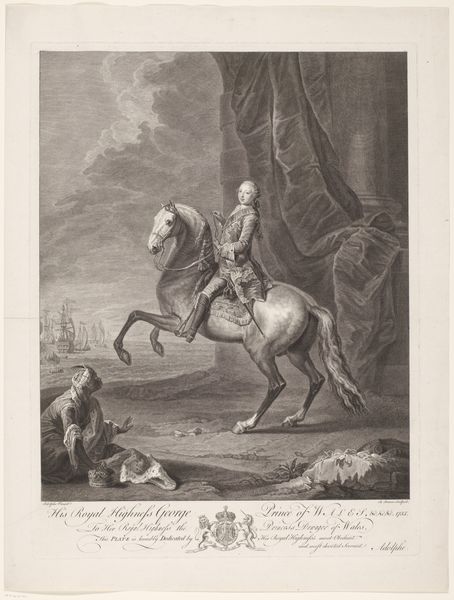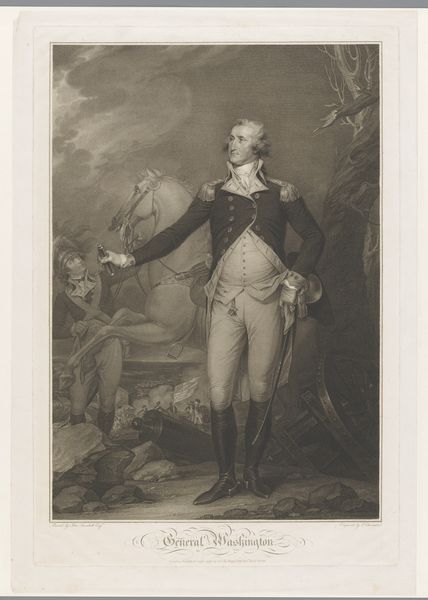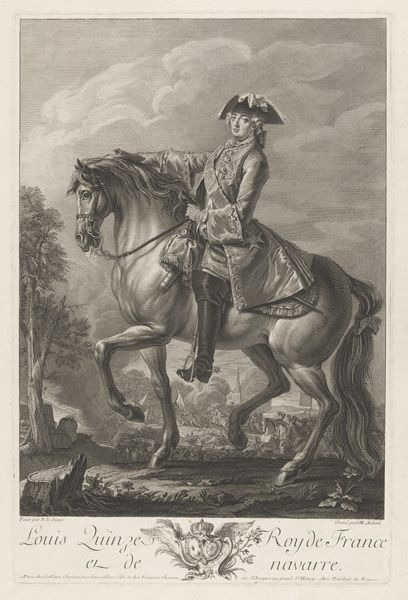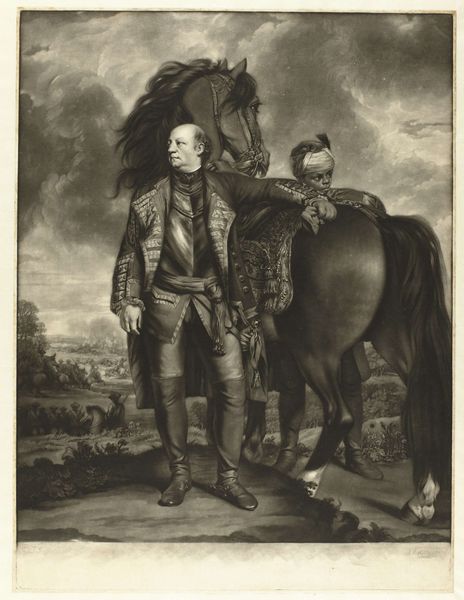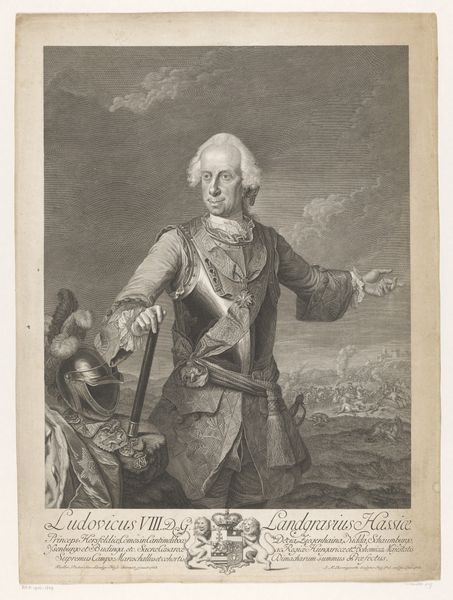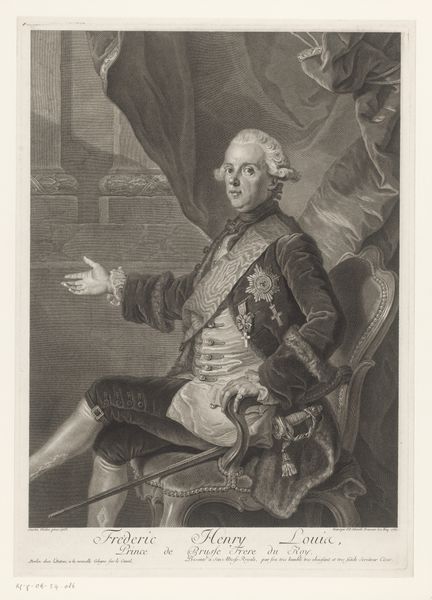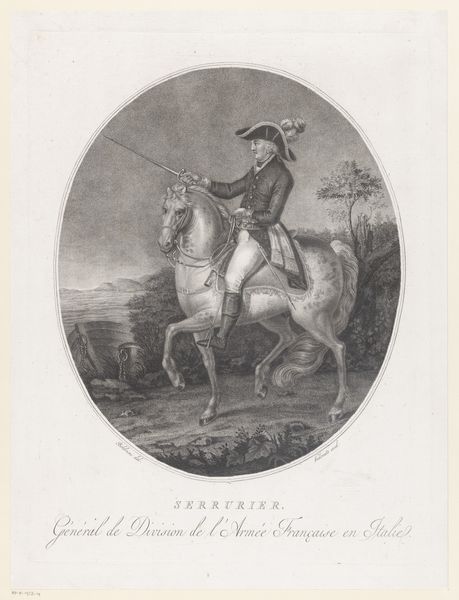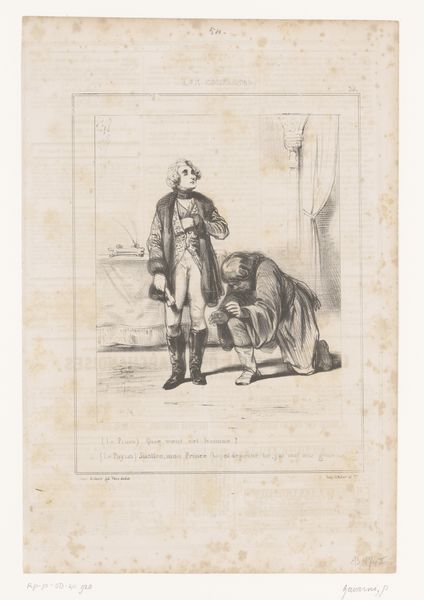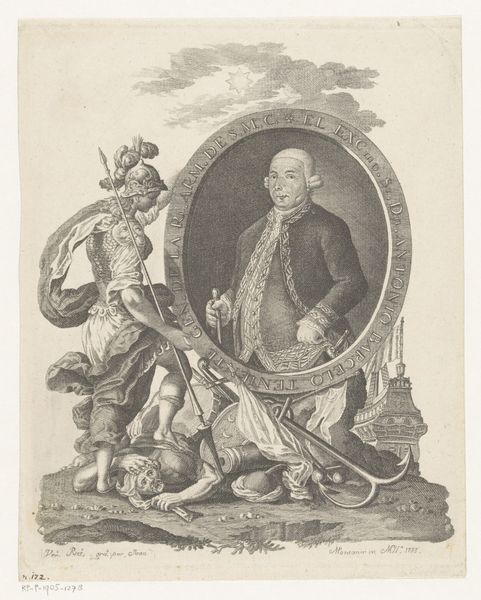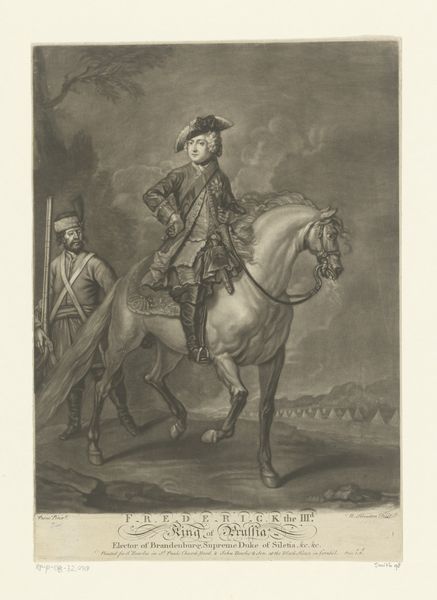
George Washington met de Amerikaanse Onafhankelijkheidsverklaring 1780 - 1781
0:00
0:00
print, engraving
#
portrait
#
neoclacissism
# print
#
landscape
#
figuration
#
archive photography
#
historical photography
#
history-painting
#
engraving
Dimensions: height 500 mm, width 361 mm
Copyright: Rijks Museum: Open Domain
Curator: We're standing before "George Washington met de Amerikaanse Onafhankelijkheidsverklaring," a print made between 1780 and 1781 by Noël Le Mire, here at the Rijksmuseum. It depicts Washington holding the American Declaration of Independence. Editor: The initial impression is somber; a dignified portrait in what seems like a vulnerable moment in the field. I see contrasts in light and shadow creating a dramatic feel. Curator: Absolutely. Placing this print within the context of late 18th century revolutions, we can examine Washington as a figure of colonial resistance and nascent American identity. How does the text on the Declaration intersect with notions of self-governance and challenging established power structures of its era? Editor: Visually, the contrast between the detailed engraving of Washington and the relatively less defined background is striking. There's almost a sense of semiotic emphasis; the document becomes as much of a focal point as Washington himself, but this visual hierarchy doesn’t particularly convince me. It seems, visually speaking, a little chaotic for neoclassicism. Curator: Yes, and if we apply a feminist lens, for instance, we could question the deliberate exclusion of marginalized groups – enslaved people, women – whose labor and voices were essential to the revolutionary effort, yet rendered invisible. Editor: Indeed. Zooming into the compositional elements, note the way his gesture leads the eye toward that scroll. And consider the strategic use of shadow to emphasize his presence, highlighting the role of leader. Curator: Let’s also think about the role of prints as disseminators of information and propaganda. How did images like this contribute to the construction of a national narrative? Who was its audience, and what impact did it have on shaping public opinion about the American Revolution both within the colonies and in Europe? Editor: It makes one wonder if a deconstruction would actually do the work a service here. It's far from the idealized portrait of Washington that I might expect. Interesting to consider what that chaos might be suggesting. Curator: Understanding the historical context certainly enhances how we perceive not just the man, but the burgeoning ideals represented in that Declaration he holds. Editor: Yes. While dissecting the compositional and structural elements offers one perspective, overlaying it with an awareness of its time enriches the visual and expands interpretations.
Comments
No comments
Be the first to comment and join the conversation on the ultimate creative platform.
